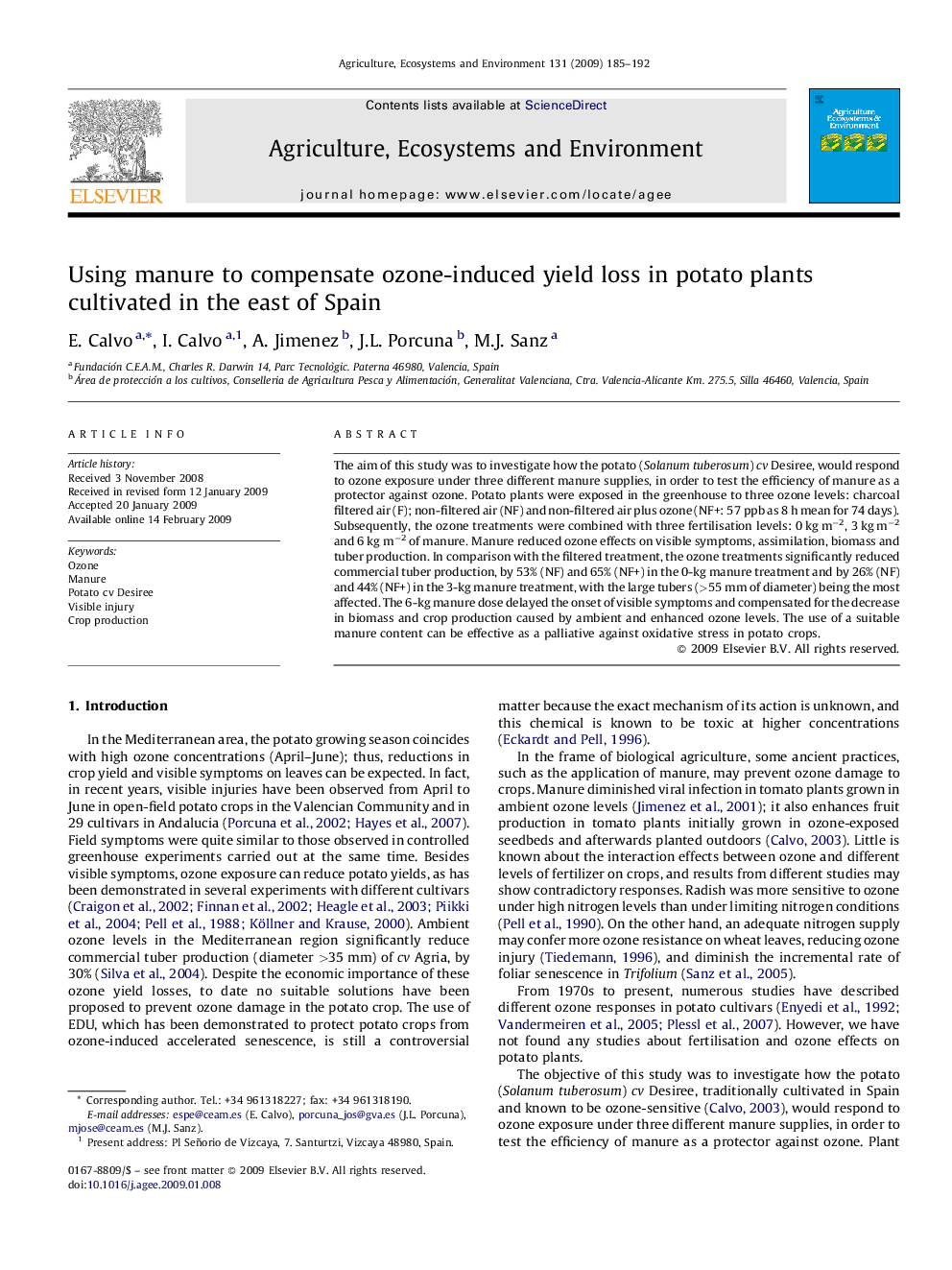| Article ID | Journal | Published Year | Pages | File Type |
|---|---|---|---|---|
| 2415230 | Agriculture, Ecosystems & Environment | 2009 | 8 Pages |
The aim of this study was to investigate how the potato (Solanum tuberosum) cv Desiree, would respond to ozone exposure under three different manure supplies, in order to test the efficiency of manure as a protector against ozone. Potato plants were exposed in the greenhouse to three ozone levels: charcoal filtered air (F); non-filtered air (NF) and non-filtered air plus ozone (NF+: 57 ppb as 8 h mean for 74 days). Subsequently, the ozone treatments were combined with three fertilisation levels: 0 kg m−2, 3 kg m−2 and 6 kg m−2 of manure. Manure reduced ozone effects on visible symptoms, assimilation, biomass and tuber production. In comparison with the filtered treatment, the ozone treatments significantly reduced commercial tuber production, by 53% (NF) and 65% (NF+) in the 0-kg manure treatment and by 26% (NF) and 44% (NF+) in the 3-kg manure treatment, with the large tubers (>55 mm of diameter) being the most affected. The 6-kg manure dose delayed the onset of visible symptoms and compensated for the decrease in biomass and crop production caused by ambient and enhanced ozone levels. The use of a suitable manure content can be effective as a palliative against oxidative stress in potato crops.
